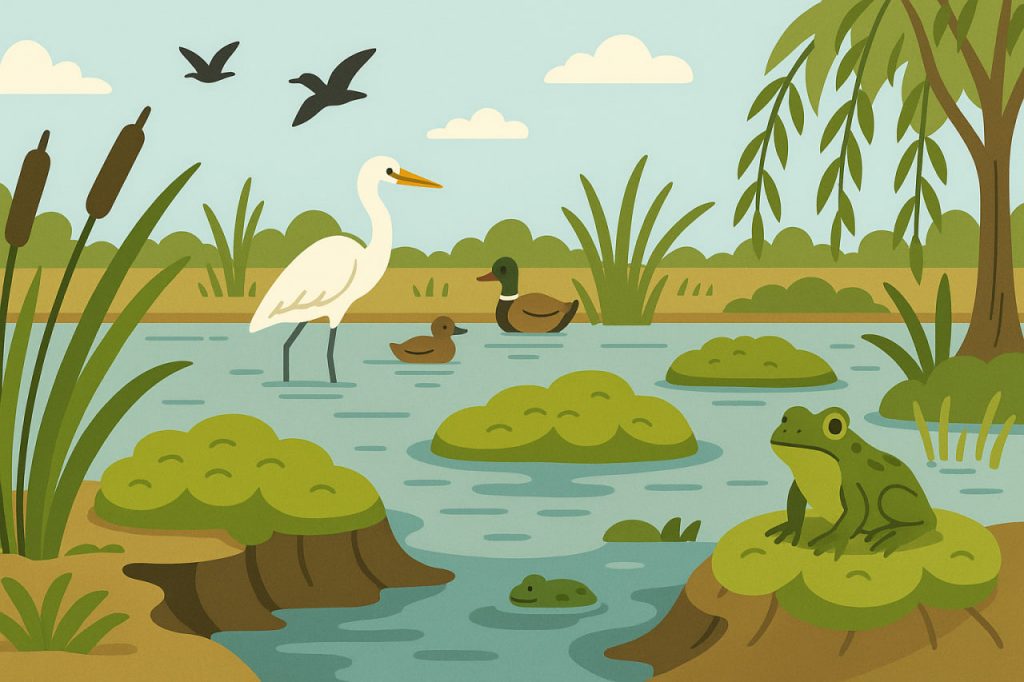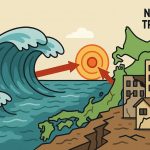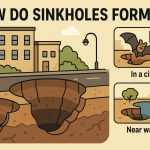Wetlands, or swamps, form in areas where water accumulates on the surface or just below the soil for long periods. This can happen due to poor drainage, frequent flooding, or high groundwater levels. Over time, these conditions create waterlogged soils that are low in oxygen, slowing the decomposition of organic matter.
The Role of Climate and Landscape
Wetland formation depends on climate, topography, and geology. In colder regions, glaciers left depressions that later filled with water, while in warmer climates, heavy rainfall and river floods created vast swamp systems. Flat landscapes with impermeable soils also favor wetland development.
Vegetation in Wetlands
Wetlands support unique plant life adapted to water-saturated soils. Species such as sphagnum moss, sedges, reeds, and willows dominate. These plants not only survive in low-oxygen conditions but also help trap and store organic matter, gradually forming peat in some wetlands.
Ecological Importance
Wetlands play a critical role in ecosystems. They act as natural water filters, trapping pollutants and improving water quality. They also serve as habitats for countless species of birds, fish, amphibians, and insects. Many endangered animals rely on wetlands for survival.
Climate Regulation
One of the most important functions of wetlands is carbon storage. Peat bogs, for example, lock away vast amounts of carbon for thousands of years. Destroying wetlands releases this stored carbon into the atmosphere, contributing to climate change.
Human Benefits
Wetlands reduce flood risks by absorbing excess water during heavy rains. They also recharge groundwater supplies and provide resources such as peat, fish, and medicinal plants. Many cultures have long depended on wetlands for food and raw materials.
Conclusion
Wetlands are vital ecosystems formed by the interaction of water, soil, and vegetation. They provide essential services, from water purification and flood control to biodiversity conservation and climate regulation. Protecting wetlands is crucial for both nature and people.
Glossary
- Wetland – land area saturated with water, such as swamps, bogs, and marshes.
- Peat – partially decomposed organic matter accumulated in wetlands.
- Sphagnum moss – a moss species that dominates many bog ecosystems.
- Carbon storage – the process of capturing and holding carbon in ecosystems.
- Flood control – natural or artificial measures to reduce flood impact.
- Groundwater recharge – replenishment of underground water supplies.


